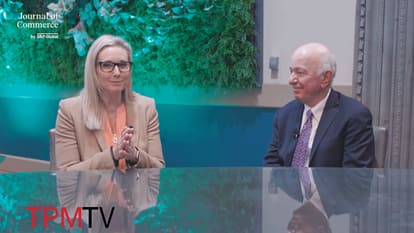- Program
- What's New
- Speakers
- Who's Attending
- TPM Community
- Partners

TPM Partnership
Partnership places your company in a position of authority and enables you to build and strengthen your relationships, visibility and reputation with major shippers
LEARN MORE - Media

TPM TV
Episodes of exclusive TPM content featuring interviews of key stakeholders and attendees.
WATCH NOW - About

About TPM
The must-attend conference for the trans-Pacific and global container shipping and logistics community
LEARN ABOUT TPM - Get Updates
- FAQ's
Theme: The Great Integration
The logistics industry often talks about the negative impacts of silos, where data or decisions in one system is locked away from others. At the extreme end of that spectrum, entire departments are siloed. The industry has treated technology itself in a similar manner. Technology investment decisions are separate from logistics operations decisions. Tech personnel operate in a different orbit from strategic leaders. But that can’t work anymore.
Technology investment decisions are logistics investment decisions. They are tightly integrated, evidenced by the number of companies going through “digital transformation” initiatives.
That’s the primary reason TPMTech was centered around integrating the logistics industry, and why TPMTech itself was integrated into the larger TPM24 conference. It’s important that discussions and experiences in logistics technology be placed in the context of the overall industry. And nowhere does the market take stock, advance, and inform itself as it does at TPM. With TPMTech intertwined in those discussions, there’s a real opportunity to entrench technology in broader discussions of service and performance.
Over the course of three days, the TPM24 tech program provided a mix of practical information, senior-level one-on-ones, and case studies exploring how shippers and their service providers are using tech to alleviate or resolve real-life supply chain challenges. It provided a forum to take a big-picture look at the future, all tightly integrated across the footprint of TPM24.
